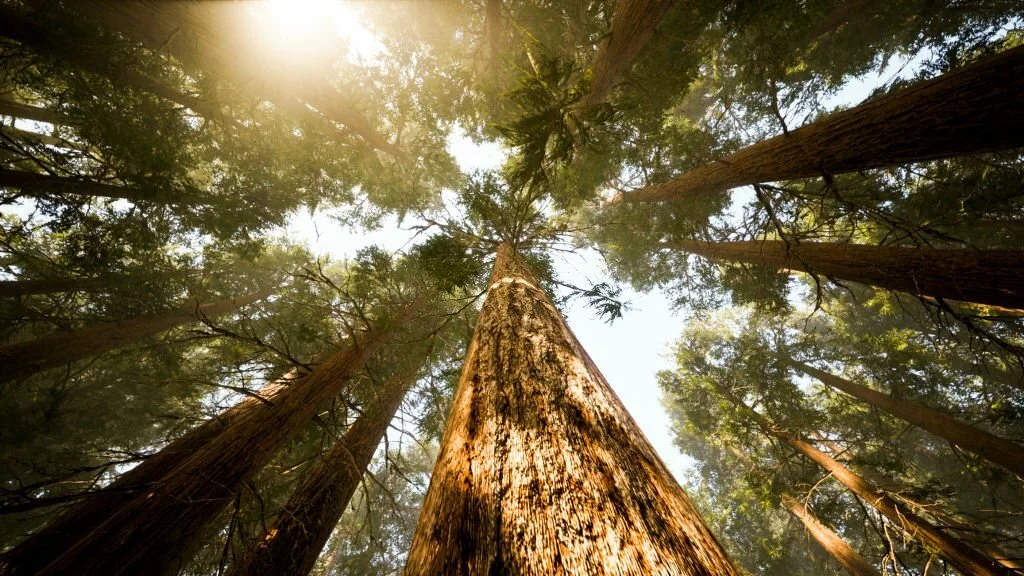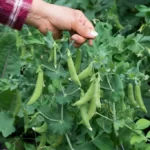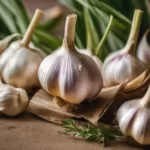Planting under a pine tree presents a unique and enchanting opportunity to transform the often shaded and acidic space beneath these majestic giants into a lush and thriving garden. Pine trees, with their evergreen needles and towering presence, create a distinctive environment that requires careful consideration when choosing the right plants. In this article, we’ll explore the art of planting under pine trees, with a focus on shade-tolerant perennials. These plants not only embrace the challenge of shade but also add color, texture, and vitality to the cool, quiet world beneath the pines.
Considerations for Planting under Pine Trees
Before you embark on your garden journey under pine trees, it’s essential to keep some key considerations in mind:
- Shade: Understand that pine trees cast deep shade, especially as they mature. This shade limits the amount of sunlight reaching the ground, making it crucial to select plants that can thrive in low-light conditions.
- Acidic Soil: Pine trees tend to create acidic soil due to the needles’ decomposition. Test the soil’s pH and amend it if necessary to create a hospitable environment for your chosen plants.
- Root Competition: Pine tree roots can be extensive and shallow. Take care when planting to avoid damaging the tree’s root system and select plants that can coexist with these roots.
- Moisture Levels: The dense canopy of pine trees can make the soil dry quickly. Be prepared to provide supplemental watering during dry periods to ensure the plants’ health.
- Maintenance: Regular maintenance is essential, including mulching, weeding, and occasional fertilization to support the growth of your under-pine garden.
- Purple Heuchera Plant for Garden, Heuchera Well Rooted in Potted
Plant Selection: Shade-Tolerant Perennials
To thrive in the shade and acidic soil under pine trees, consider these shade-tolerant perennials that can add life and color to your woodland garden:
- Hostas (Hosta spp.): These shade-loving perennials come in a range of leaf colors and textures, making them a versatile choice for pine tree settings.
- Astilbe (Astilbe spp.): With their feathery plumes of flowers, astilbes bring bursts of color to the shaded areas, offering shades of pink, white, and red.
- Bleeding Heart (Dicentra spectabilis): The unique heart-shaped blooms of bleeding hearts add a touch of romance to the garden under pine trees. They are ideal for partial to full shade.
- Coral Bells (Heuchera spp.): Coral bells feature attractive foliage in various colors and delicate, airy flowers that brighten up shaded spots.
- Japanese Forest Grass (Hakonechloa macra): This grass-like perennial adds a graceful touch with its cascading form and vibrant green or variegated foliage.
These shade-tolerant perennials are excellent choices for creating a vibrant and dynamic garden beneath pine trees. Their adaptability to low-light conditions and willingness to thrive in acidic soil make them valuable additions to your landscape, bringing life and beauty to the quiet world of your pine-shaded garden.
Plant Selection: Groundcovers and Ferns
In the tranquil world under pine trees, groundcovers and ferns serve as valuable allies for covering the soil, adding texture, and enhancing the overall beauty of your garden. Here are some excellent choices for planting under pine trees:
- Pachysandra (Pachysandra terminalis): This evergreen groundcover is known for its glossy leaves and tolerance of shade and acidic soil. It forms a dense carpet that effectively suppresses weeds.
- Vinca Minor (Vinca minor): Also known as periwinkle, this trailing groundcover produces charming blue or white flowers in the spring. It’s a reliable choice for covering the ground under pine trees.
- Ferns (various species): Ferns thrive in shaded and moist conditions, making them ideal for pine tree settings. Their delicate fronds create an appealing and natural woodland look.
- Lily of the Valley (Convallaria majalis): With its dainty, bell-shaped white flowers, Lily of the Valley adds a touch of elegance to your pine tree garden. It spreads naturally to create a lush ground cover.
Mulch and Maintenance
Mulching and proper maintenance are crucial for the health and beauty of your garden under pine trees. Here’s what you need to know:
- Mulch: Apply a layer of organic mulch, such as pine straw or shredded leaves, around the base of your pine trees and among your plants. Mulch helps conserve soil moisture, suppress weeds, and improve soil quality. Be sure not to mound the mulch against the tree trunk to avoid rot.
- Weeding: Regularly check for and remove weeds that may emerge in the garden. Pine straw mulch, in particular, helps in weed suppression, making maintenance more manageable.
- Fertilization: Assess the nutrient needs of your chosen plants and provide fertilization as necessary. Pine tree settings may require additional nutrients due to the acidic soil.
- Watering: Monitor soil moisture, especially during dry periods. Pine tree canopies can reduce rainfall penetration, so supplemental watering may be required to keep your plants healthy.
- Pruning: Trim any dead or unsightly growth from your perennials, ferns, and groundcovers. Pruning helps maintain the appearance of your garden and promotes new growth.
By selecting the right groundcovers and ferns and following a proper maintenance routine, you can ensure that your under-pine garden remains lush, vibrant, and beautiful. The combination of shade-tolerant perennials, groundcovers, and diligent maintenance helps transform the shaded world under your pine trees into a thriving and tranquil woodland retreat.
Wildlife and Bird-Friendly Plants
Planting under pine trees not only enriches the visual appeal of your garden but also provides an opportunity to create a haven for wildlife, including birds and insects. Here are some plant selections that will attract and support local wildlife:
- Wild Bergamot (Monarda fistulosa): Wild bergamot, also known as bee balm, produces vibrant pink to lavender flowers that are irresistible to bees, butterflies, and hummingbirds.
- Columbine (Aquilegia spp.): Columbines are known for their unique, spurred flowers, which provide nectar to hummingbirds and bees.
- Toad Lily (Tricyrtis spp.): Toad lilies feature distinctive, orchid-like blooms that attract pollinators like butterflies and native bees.
- Native Grasses: Consider planting native grasses like little bluestem (Schizachyrium scoparium) or switchgrass (Panicum virgatum) to provide habitat for ground-dwelling wildlife.
- Bird-Friendly Trees and Shrubs: In addition to the underplanting, adding bird-friendly trees and shrubs nearby, such as serviceberry (Amelanchier) or dogwood (Cornus spp.), can attract a variety of songbirds to your garden.
Conclusion
Planting beneath the gentle shade of pine trees can transform your garden into a captivating and vibrant woodland retreat. By carefully selecting shade-tolerant perennials, groundcovers, ferns, and wildlife-friendly plants, you not only enhance the aesthetics of your garden but also create a thriving ecosystem that supports local wildlife.
As you embrace the unique challenges and opportunities of planting under pine trees, remember that nature rewards your efforts with tranquility, beauty, and the joy of watching birds, butterflies, and other creatures make themselves at home. By thoughtfully selecting, nurturing, and maintaining your garden, you’ll enjoy a slice of nature’s wonder right in your own backyard, where the towering pines and thriving underplantings coexist in harmony, creating a captivating outdoor haven for you to enjoy throughout the seasons.





